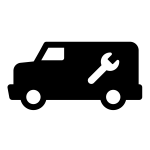Upon completion of the project, our partner in the field reports...
Community Details
Just like many other wells in this area, this well had been abandoned for a long time. For this small suburb in the Koya Rural district, located 19 miles from Waterloo that is the administrative headquarter town for Western Area Rural District, with a population of 275 people living in 32 households, safe water was not an option. When Living Water Sierra Leone arrived to restore safe water access, they opened the well and found it packed with debris. The well was also full of sand and the team had to excavate the well to remove the sand. The team was then able to restore, chlorinate and cap the well with an Afridev hand pump. This well, when functioning, provides immeasurable benefit to the people living in this farming community. Before the well was restored, the people lacked basic necessities including clean and safe drinking water. The problem of WASH-related issues surfaced daily as the community’s lack of safe water and unsafe hygiene practices further implicated their livelihoods and health. In 2004, The Kwama Community Development Program (KCDP) constructed a well with funds provided by Plan International Sierra Leone, but the well was damaged in 2009 and consequently the people had been living without water for the past six years. Since then, the only alternative water source has been an unprotected stream, which is unprotected and runs dry during the summer months. This community’s lack of latrines also lead to an alarmingly high prevalence of open defecation that opened doors to disease. Diarrhea became a regular occurrence, and as it is also a symptom of the Ebola Virus Disease (EVD), the people and health clinics had grown to fear and mistake the symptom of diarrhea for Ebola. Although this community has not registered a single case of Ebola, the Living Water Sierra Leone team still shared Ebola awareness lessons with the people to help them keep the disease out of their community and so that in case the disease did make its way into Mayemi Bana, that they would know how to prevent contracting the virus. Even through Ebola is not in the community, the people still suffer with the rest of the country, as they also endure hardships from increasing food prices and inflation of necessary goods.
After a successful well rehabilitation, the Living Water Sierra Leone team played a guiding role in the establishment of an 11-person water committee. This committee was trained to maintain their well and manage its water resources. The committee was also trained in leadership so that they can instruct the community how to properly use the well. There was a local well caretaker selected from the community who was further trained to not only maintain the well, but also to restore the well were it to fall into disrepair. It is Living Water’s goal that communities served will be able to support and maintain their own wells. However, Living Water Sierra Leone has established relationships with the local government and technicians in surrounding communities that are capable and willing to help repair this well were it to become damaged. Living Water Sierra Leon is committed to helping thirsty communities not only gain access to the basic human right—water, but also equipping communities to make informed hygiene and sanitation choices and to maintain their own wells. Together, in partnership with The Water Project, this shared goal can become a reality.
Hygiene Promotion
Typhoid, malaria and respiratory infections were a regular occurrence due dirty water and a lack of education in hygiene and sanitation. Additionally, the community unknowingly compounded their health problems by practicing open defecation and other unsafe hygiene and sanitary practices. In an effort to allow beneficiaries the full benefits of knowing safe water, the Living Water team addressed the following hygiene and sanitation lessons including: disease transmission, germs, healthy and unhealthy communities, hand washing-proper techniques and water saving methods, latrine perception, good-bad hygiene behaviors, tippy tap, keeping the water clean. To encourage community participation in the hygiene lessons, the team used the LWI Traditional Method, which is a participatory method to help community members discover ways to improve their hygiene and sanitation choices and implement community-driven solutions. A Living Water Sierra Leone team member commented, "After the training the community promised to drastically improve the hygiene and sanitation situation in the area by making sure they construct latrines and stop open defection."
Community Member Interview
"The well has transformed our lives in this community. It has brought joy and restored our dignity," shared 43-year-old community member and farmer, Kemoh. "The water from the old source was prone to contamination resulting from high open defecation practices in the community. It was also so dirty since it was an open water source. This new water is now very clean and we find it good to use."
 Well Rehab
Well Rehab Rehabilitation Project
Rehabilitation Project












